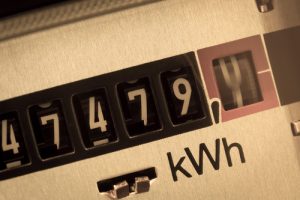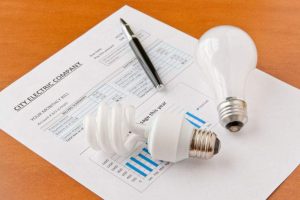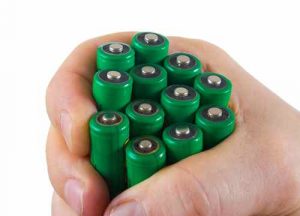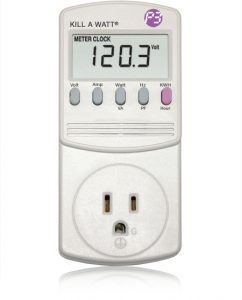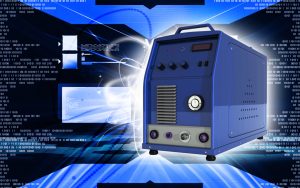What is electricity? The basics: voltage, ampere, power explained
Look around and you shall find that you are indeed surrounded by electrical appliances. Be it a television, an air conditioner, a water cooler, a ceiling fan or a refrigerator, electrical appliances have become an integral part of our life. In summers when the mercury rises, you just press a button and a cool breeze soothes you. During winters, when you think twice before going under the shower to take a bath, warm water is again just a push of a button away. In ancient times one would think that this was all magic, but it is not. It is due to something which is far from being magical – electricity.
Electricity have taken our lives to new standards. The number of electrical appliances at houses is increasing by the day. A couple of days back, a friend of mine asked me to define electricity. When I did, he asked still more questions on the terms which I had used in the definition. He said that he wanted to purchase the best suited product for himself but whenever he looked at the specifications of an appliance, he was bombarded with words like Voltage, Power, Ampere, power factor etc. Although the words are fairly common, but still he did not know what they meant. So we at Bijli Bachao thought of explaining these terms in the simplest way.
Before buying an appliance, one is faced with the most popular question of all time – which appliance should I buy? As simple as the question may sound, its answer requires a lot of understanding and deliberation. It depends on many factors which one has to consider before taking the plunge. The decision to buy an appliance is a major one and so it is as much important that it is well informed. And for that, you need to understand the basics of electricity. So we at Bijli Bachao thought of writing an article about the basics of electricity which might be helpful in making better decisions while buying an appliance. So let’s get started!
What is electricity?
For many people, it means ‘something which flows through the wires’. Although it is not incorrect, but defining it like this is nothing short of calling King Kong ‘just another monkey’. If I have to put it in the simplest of words minus all the technical jargons, I would say that electricity is the flow of electric current through a conductor. And what is a conductor? A conductor is a material (can be solid, liquid or gas) which allows the flow of electric current through it. For instance, when you touch a bowl (made of copper) full of boiling water, you feel hot and immediately pull your hand away. It is because copper (the material used to make the bowl) is a good conductor of heat.
Similar is the case of eletricity. The materials which allow the flow of electric current through them are conductors of electricity. You must have seen a bunch of wires (usually black coloured) around your computer at your houses. It is in those wires that the current flows. The wires are covered up of insulated rubber (which does not conduct electricity) and that is why you are able to touch the wires with bare hands without getting an electric shock.
To measure anything, we need units. To measure weight of something we use kilogram (kg), to measure distance we use metre (m), to measure capacity of a container we use litre (L) and so on. In the same way to measure electricity (or electrical energy) we use kiloWatt hour (kWh), which in everyday language is simply called as ‘units’. So next time your friend tells you that he consumed 200 units during a month, it would mean that he had consumed 200 kWh of electricity during the month.
What is a ‘Watt’?
Watt (W) is a unit of Power (in this case, electrical power). So what is Power? Is it that power in terms of which we compare wrestlers? Although it is not exactly same as the electrical power, but it is very similar. Power is nothing but the rate of doing work. It is the amount of energy (measured in Joules) consumed in unit time (measured in seconds). So when we say a wrestler A is more powerful than a wrestler B, it means that wrestler A is able to work more than wrestler B in the same amount of time.
Therefore the unit of electrical power is Joules/second. And this is what we call Watt, in honour of James Watt who is attributed to the invention of steam engine back in the 18th century.
So a kilo-Watt (kW) means 1000 Watts.
Therefore if you use 1 kW electrical power for 1 hour, it means you have used 1kWh (or 1 unit) of electricity.
Understanding Voltage and Current
You must have seen a sign of a human skull above a cross (X) saying ‘Danger 440 Volts’ on electricity poles. So what is a ‘Volt’?
This can be understood from a very simple analogy. Most of things around us have a tendency of flowing from a higher side to a lower side. For example, when we talk to an expert in a certain field, say a professor, who has abundance of knowledge, then the knowledge flows from him/her to us and we understand things. Why? Because there is a difference between the level of knowledge between us and the professor. And thus the knowledge flows.
Similar is the case of voltage. Voltage or electric potential is the potential difference between two points in space, say A and B, which have different potentials. If you want to move an electric charge between these two points, you shall have to use energy or in other words you shall have to work to move the charge. So the amount of work done to move an electric charge between these two points in unit time is the voltage.
The electric potential is expressed in Volts (V). A device called Voltmeter is used to measure voltage.
Now let us understand electric current. In the previous example of a professor and a student, we understood that knowledge flows only when there is a difference in the level of knowledge between the two people involved. The professor’s sound (while imparting a lecture) that flows between the two concerned people is analogous to electric current which flows between two points at different potentials. Current is the flow of electric charge. The electric charge is usually carried by moving electrons or ions in a wire. So when electric charge flows through a wire, we say that electric current is flowing through it. It is expressed in Ampere (A). On every electrical appliance you shall find the ‘Amps rating’. It is nothing but the electric current it conducts. For instance, a 15 Amp power plug means that it conducts 15 Ampere current through it.
How are Voltage and Current related? (Ohm’s Law)
Voltage and current are related to each other by the following relation-
V = I x R
This means that higher the value of the current, higher is the voltage between two points and vice-versa. The voltage provided to a conductor is not completely converted to current, as there are limitations as to the maximum current a material can pass through it. Every material offers some opposition to the passage of current through it which is called Resistance (R) which is expressed in Ohms. The above relation is called Ohm’s Law.
If we see this in the professor-student scenario again, resistance is something due to which the entire knowledge does not flow between the two people. When a professor imparts knowledge to a student, it is highly unlikely that the student understands 100% of the knowledge that was imparted to him. The loss of that knowledge is due to an opposition which is offered by the student to the flow of knowledge. That is analogous to resistance.
Power factor and Volt Ampere
To understand power factor and volt ampere let us first consider an example. When you order a coffee you are brought with a cup of coffee topped with bubbling froath. Although you only ordered (and paid for) the coffee, you get a small layer of froath alongwith it without even ordering it!
Similar is the case with the electrical energy.
Watts = Power factor * volts * amperes
The same relation can be re-expressed as-
(Real power / total power) = Power factor
Real power is expressed in the terms of Watts and the total power (or apparent power) is expressed in VA or Volt-Amperes.
In case of huge motors (usually in industrial settings) or heat pumps electrical energy, in addition to being converted to mechanical energy also gets consumed in producing magnetic energy.
Electrical energy = Mechanical energy + Magnetic energy.
When electric current passes through a motor, due to the magnetization of the motor energy is not used (or wasted). In order to prevent this loss capacitor banks are installed which store the energy and thereby reduce the instantaneous power a system draws.
The ideal value of the power factor is 1. But appliances do not have such a high value for power factor. It usually falls in the range of 0.3 to 0.9. So it is advised that appliances with high power factor should be used.
Conclusion
We have tried to explain the concepts of electricity in the easiest way that we could. We hope that this will help you understand these things when you go out to buy appliances or any electrical equipment. Understanding of these concepts can greatly help you to be aware of your electricity consumption.
Check this video to make it easier to understand:
Also check this video that can help you understand how many units your appliances are consuming:

